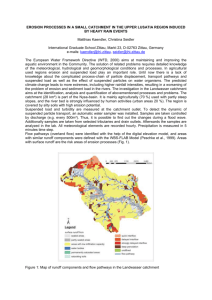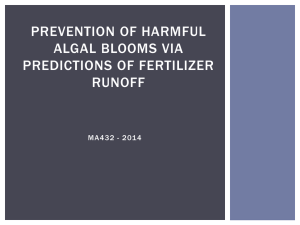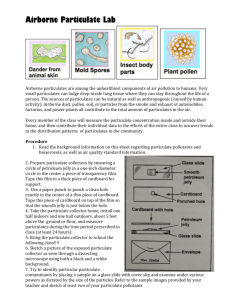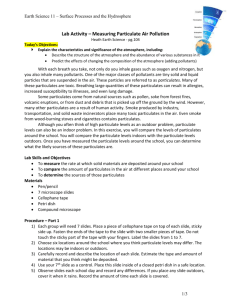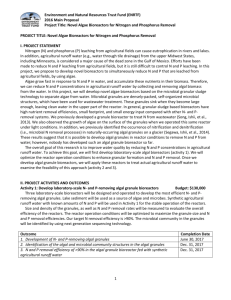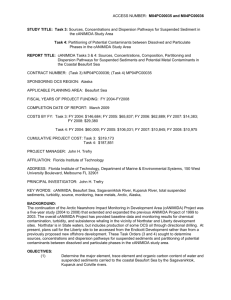INDICATOR8:
advertisement
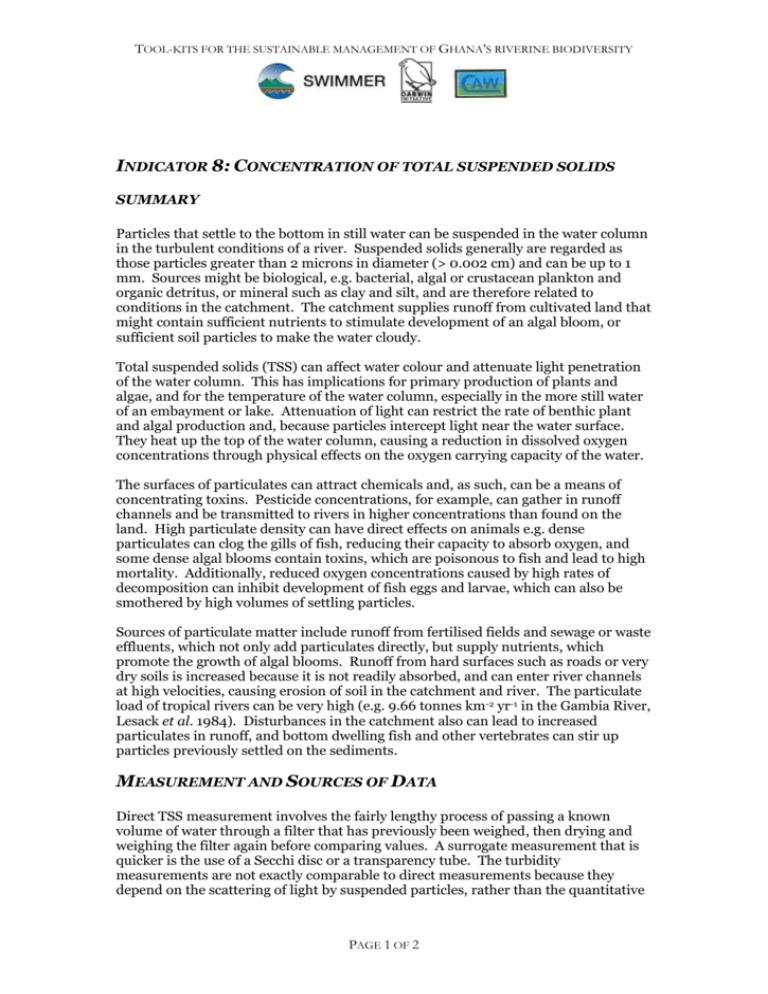
TOOL-KITS FOR THE SUSTAINABLE MANAGEMENT OF GHANA’S RIVERINE BIODIVERSITY INDICATOR 8: CONCENTRATION OF TOTAL SUSPENDED SOLIDS SUMMARY Particles that settle to the bottom in still water can be suspended in the water column in the turbulent conditions of a river. Suspended solids generally are regarded as those particles greater than 2 microns in diameter (> 0.002 cm) and can be up to 1 mm. Sources might be biological, e.g. bacterial, algal or crustacean plankton and organic detritus, or mineral such as clay and silt, and are therefore related to conditions in the catchment. The catchment supplies runoff from cultivated land that might contain sufficient nutrients to stimulate development of an algal bloom, or sufficient soil particles to make the water cloudy. Total suspended solids (TSS) can affect water colour and attenuate light penetration of the water column. This has implications for primary production of plants and algae, and for the temperature of the water column, especially in the more still water of an embayment or lake. Attenuation of light can restrict the rate of benthic plant and algal production and, because particles intercept light near the water surface. They heat up the top of the water column, causing a reduction in dissolved oxygen concentrations through physical effects on the oxygen carrying capacity of the water. The surfaces of particulates can attract chemicals and, as such, can be a means of concentrating toxins. Pesticide concentrations, for example, can gather in runoff channels and be transmitted to rivers in higher concentrations than found on the land. High particulate density can have direct effects on animals e.g. dense particulates can clog the gills of fish, reducing their capacity to absorb oxygen, and some dense algal blooms contain toxins, which are poisonous to fish and lead to high mortality. Additionally, reduced oxygen concentrations caused by high rates of decomposition can inhibit development of fish eggs and larvae, which can also be smothered by high volumes of settling particles. Sources of particulate matter include runoff from fertilised fields and sewage or waste effluents, which not only add particulates directly, but supply nutrients, which promote the growth of algal blooms. Runoff from hard surfaces such as roads or very dry soils is increased because it is not readily absorbed, and can enter river channels at high velocities, causing erosion of soil in the catchment and river. The particulate load of tropical rivers can be very high (e.g. 9.66 tonnes km-2 yr-1 in the Gambia River, Lesack et al. 1984). Disturbances in the catchment also can lead to increased particulates in runoff, and bottom dwelling fish and other vertebrates can stir up particles previously settled on the sediments. MEASUREMENT AND SOURCES OF DATA Direct TSS measurement involves the fairly lengthy process of passing a known volume of water through a filter that has previously been weighed, then drying and weighing the filter again before comparing values. A surrogate measurement that is quicker is the use of a Secchi disc or a transparency tube. The turbidity measurements are not exactly comparable to direct measurements because they depend on the scattering of light by suspended particles, rather than the quantitative PAGE 1 OF 2 TOOL-KITS FOR THE SUSTAINABLE MANAGEMENT OF GHANA’S RIVERINE BIODIVERSITY measurement made by the filtration method. Nevertheless the Secchi and tube methods are quick and easy, and give a comparative measure that is useful for monitoring purposes. REFERENCES AND FURTHER READING Lesack L.F.W, Hecky R.E. and Melack J.M. 1984. Transport of carbon, nitrogen, phosphorus and major solutes in the Gambia River, West Africa. Limnology and Oceanography 29(4) 816-830. PAGE 2 OF 2

